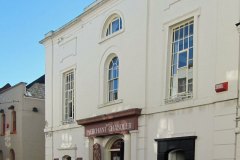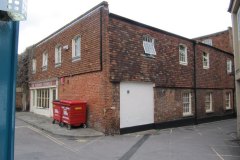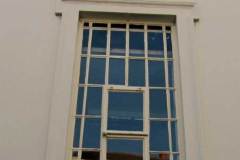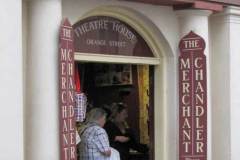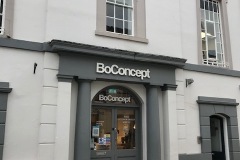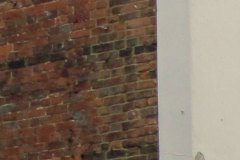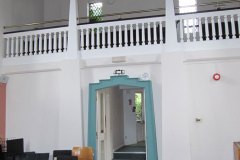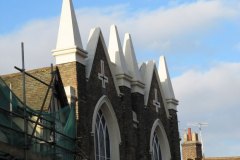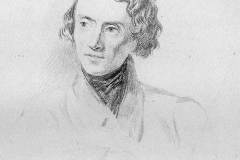Destruction of the Buttermarket theatre in the late 1780s left the city with no dedicated theatre building. Sarah Baker, who had been managing productions with her ‘Sadler’s Wells Company’ at the Buttermarket site, opened the replacement Orange Street theatre in 1789. Sarah, by this time in her early 50s, went on to establish a circuit of 10 theatres across Kent. Her son-in-law William Dowton took over running of the Orange Street theatre in 1815, and was responsible for the current classical features of the front of the building. Sarah died in Rochester in 1816, aged 80, perhaps the most successful female theatre manager of her age.
What to see:
- The theatre (Image 1) has been known variously as the Orange Street theatre, New Theatre, and Canterbury Theatre
- Orange Street was known originally as Prince of Orange Lane, apparently commemorating the stay of the Prince and Princess of Orange in the city in 1679
- The theatre was apparently established on the site of earlier public assembly rooms
- Access was originally was from the rear (Image 2), an area marked ‘Dancing school yard’ on early maps, and supposedly the site of a much earlier house owned by Sir Thomas Moore.
- The tall tapering windows (Image 3) and Greek Doric columns (Images 4 and 5) were added as a new face to the building by William Dowton in 1815 – brickwork at the side of the building clearly shows the join (Image 6). Windows of this style, often referred to as ‘Egyptian’, became popular following Napoleon’s war in Egypt, and Nelson’s victory over the French in the battle of the Nile in 1798. Canterbury examples include the King Street synagogue, the Theatre Royal, and the Methodist church in the Borough (Images 7, 8 and 9).
- Around 1820, Thomas Sydney Cooper (Image 10), the future Canterbury artist of fame, was employed as a young man painting scenery at this theatre.
- The theatre closed in 1859, condemned as unsafe.
- The site was used as a grocery store and warehouse until 1960, when it was refurbished as office and retail space. Until recently it was run as a branch of Merchant Chandlers but is now Bo Concept.
A full account of Canterbury’s many theatres (all 16 of them!) is given in Manners (2011).
Sources: Brent (1860); Cantacuzino (1970); Hasted (1800); Manners (2011); Stewart (1983); web sites:
A) http://www.arthurlloyd.co.uk/CanterburyTheatres.htm
B) http://www.theatrestrust.org.uk/resources/theatres/show/591-new-theatre-canterbury
Access: exterior visible from street
DL

